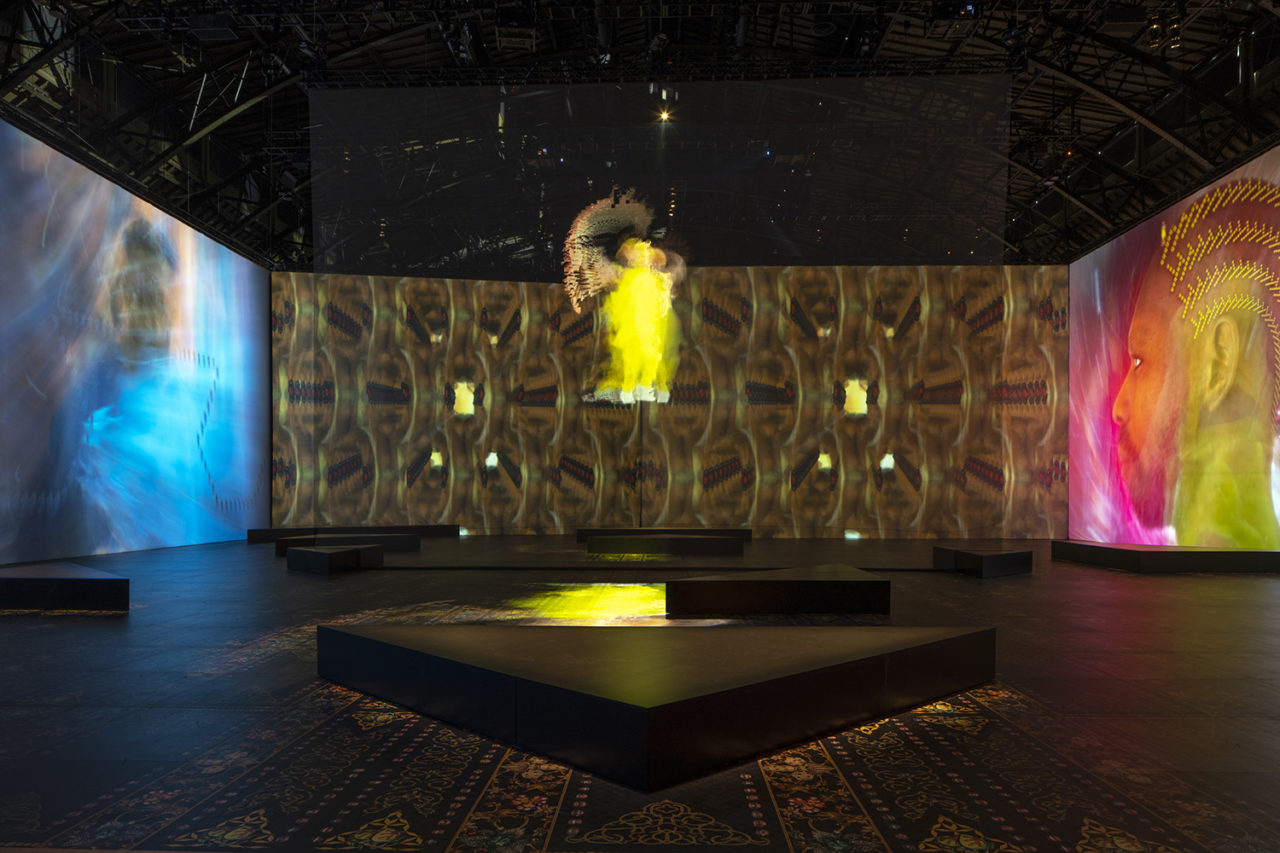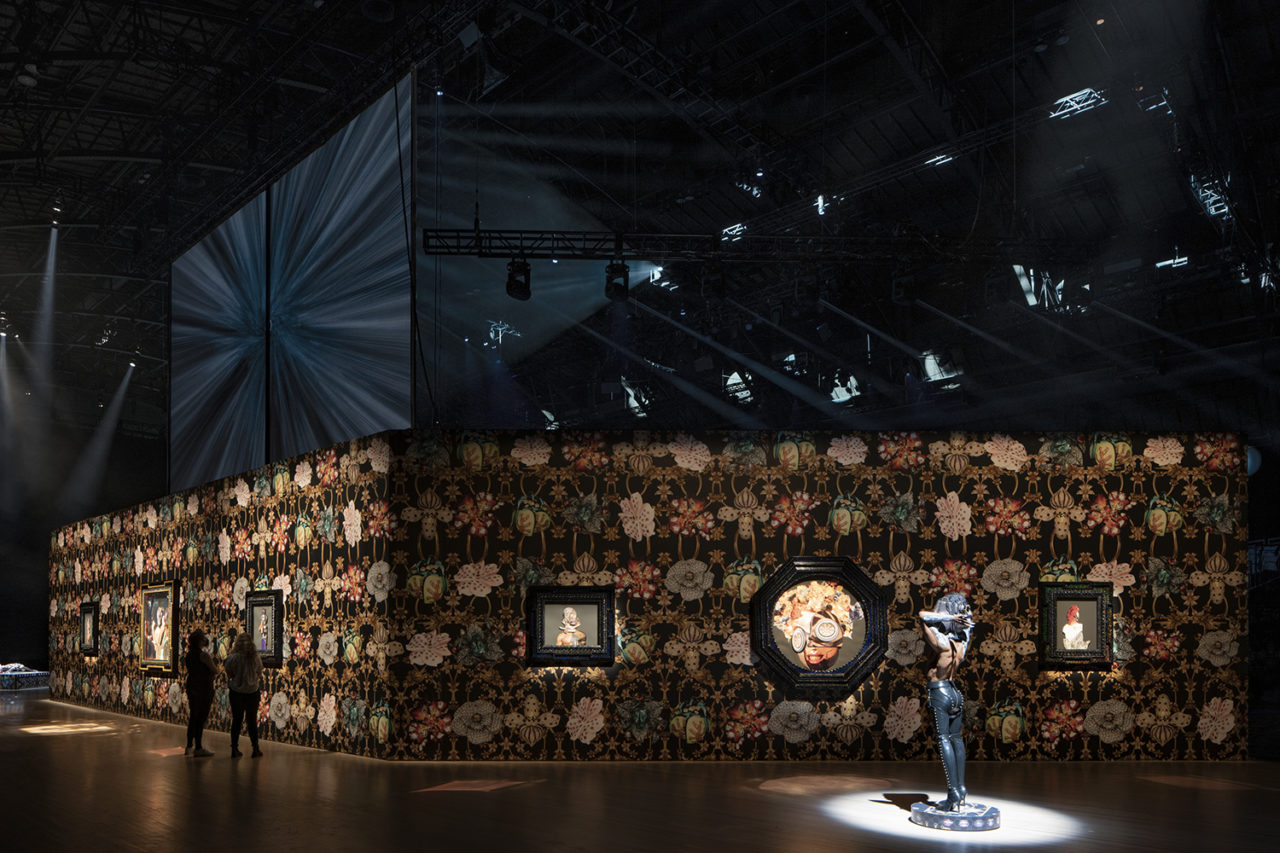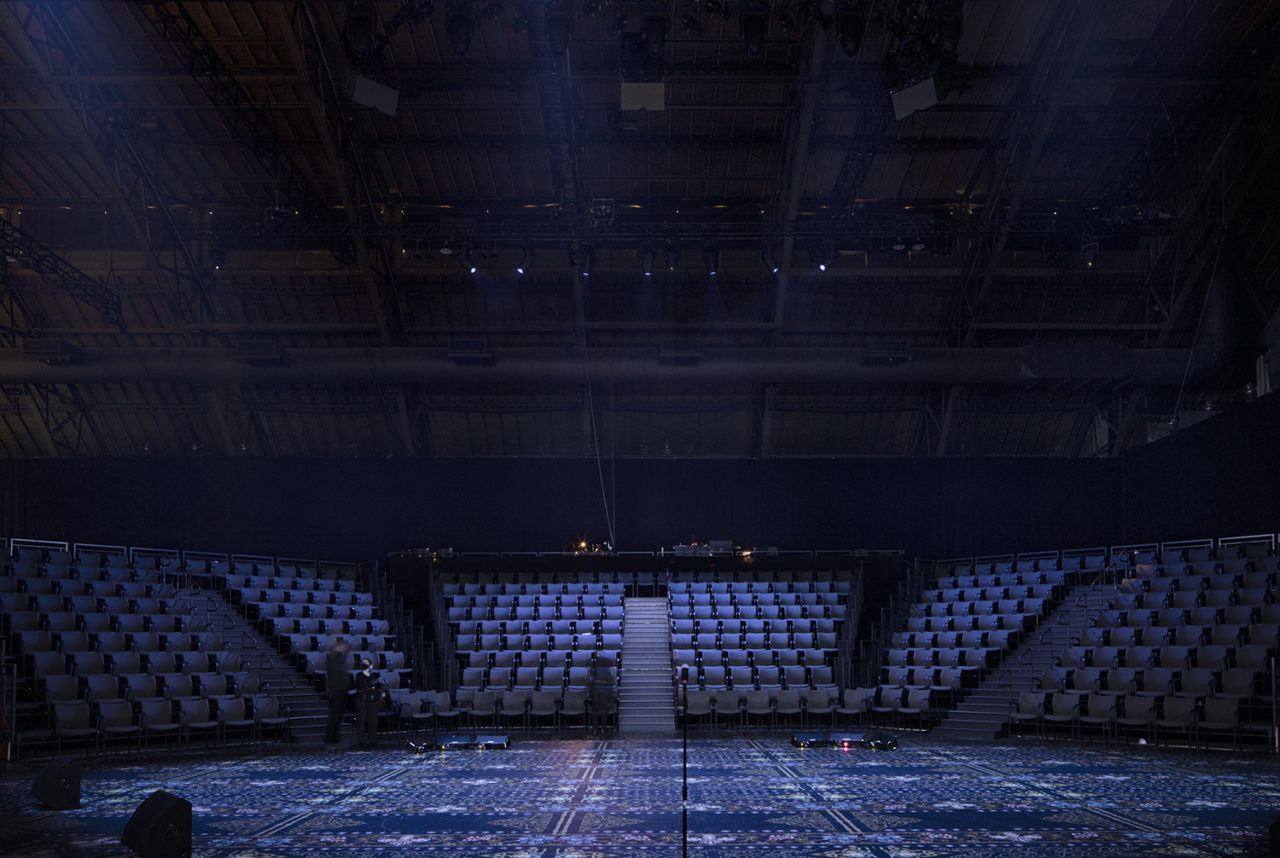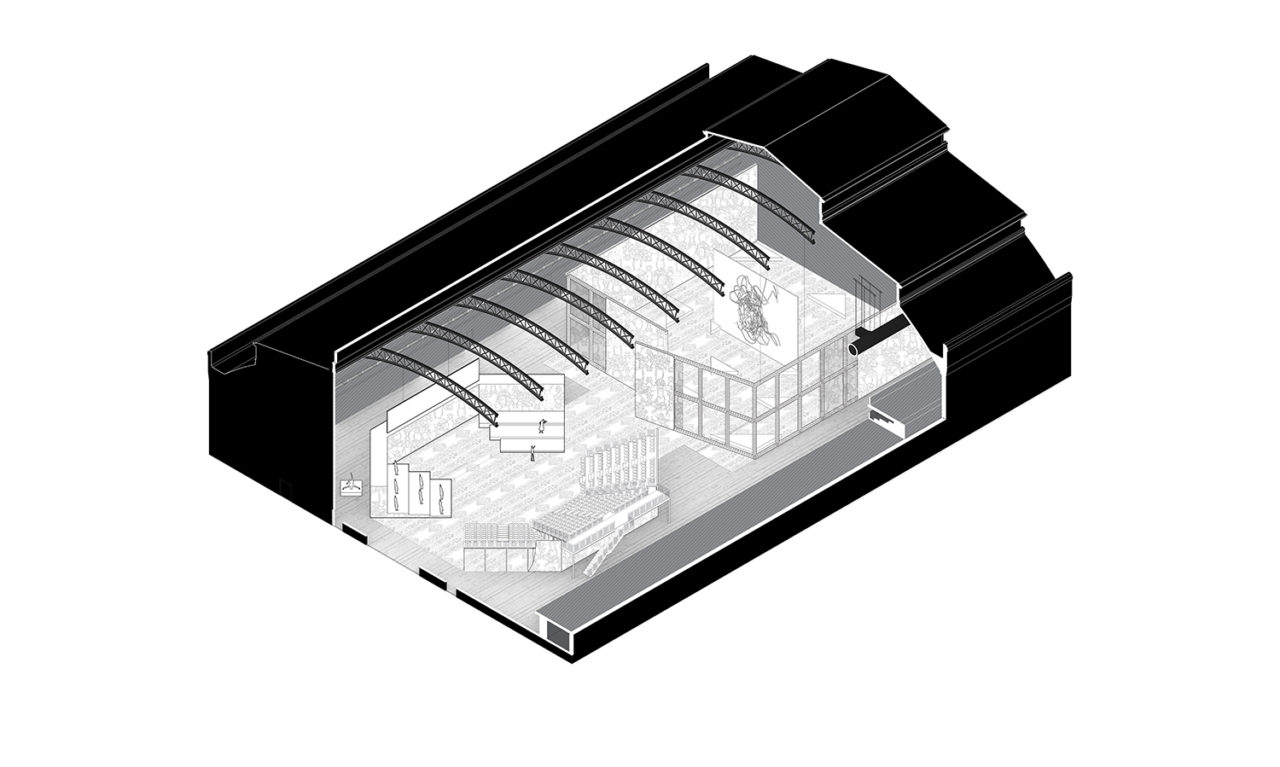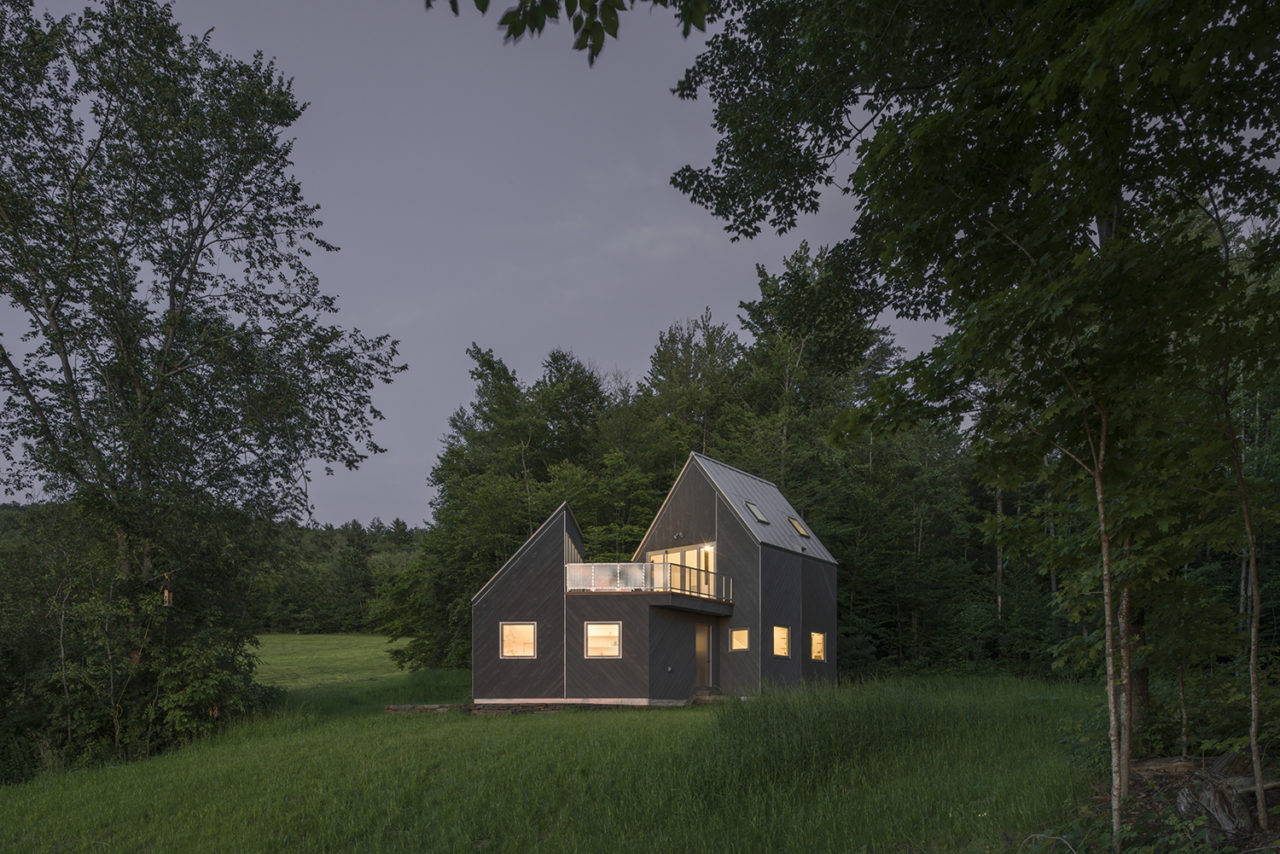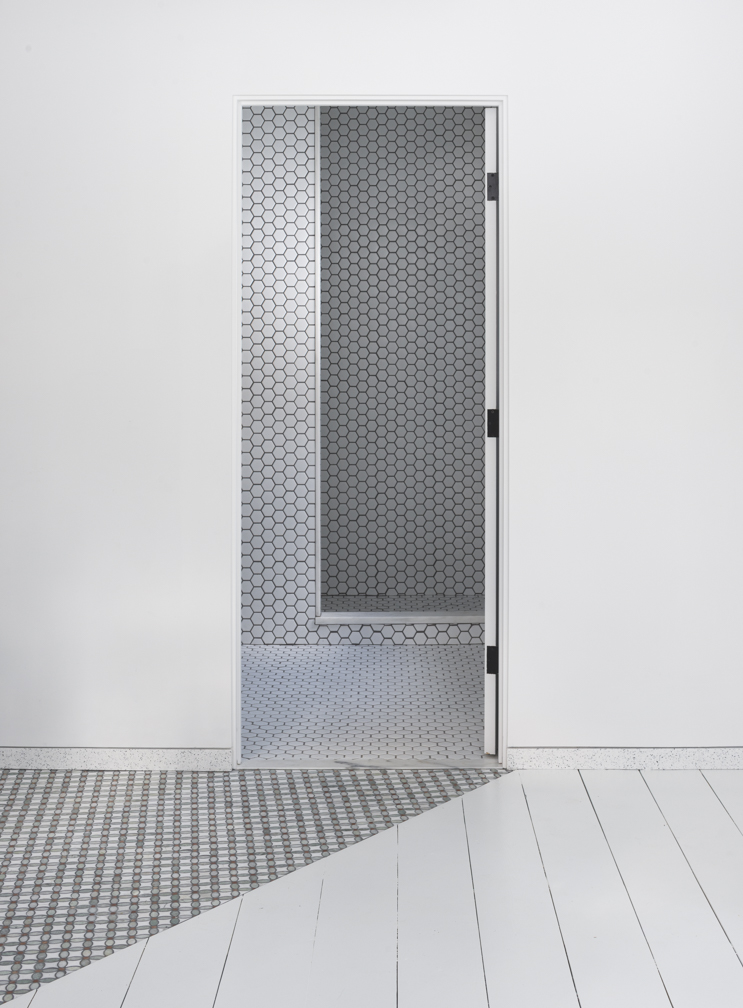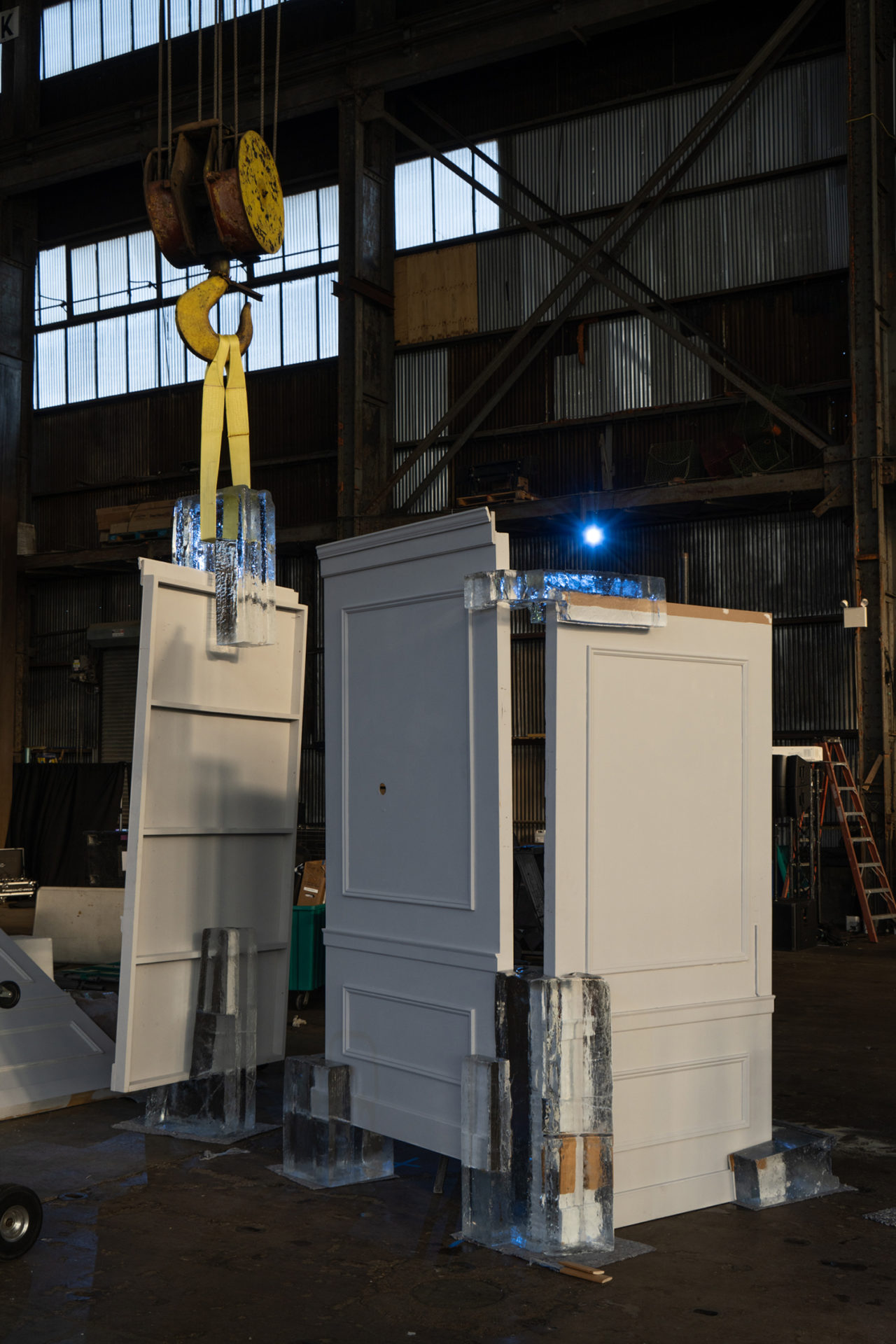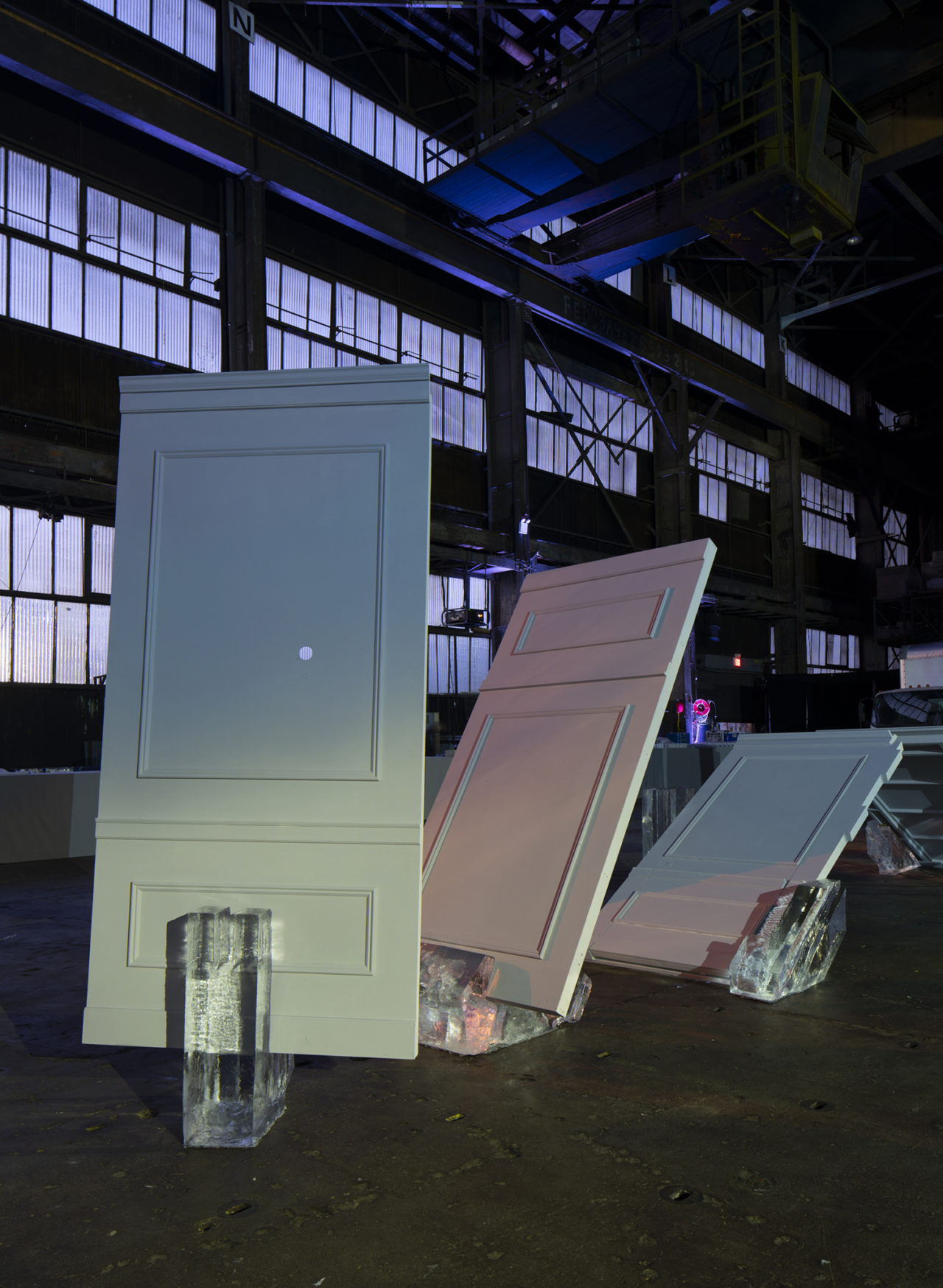by Center for Architecture
The Center for Architecture’s exhibition, New Practices New York, showcased the six winners of the most recent cycle of AIA New York’s New Practices New York competition, which serves as a platform for recognizing and promoting young and innovative designs firms in the city. In conjunction with the program, the Center for Architecture has spotlighted the competition winners through a series of online interviews, offering a glimpse of New York City’s bright architectural future. While the exhibition has recently closed, we’re excited to present you with the final firm in our series: New Affiliates.
Founders: Ivi Diamantopoulou and Jaffer Kolb
Date Founded: 2016
Most Recently Constructed Project: Rashaad Newsome: Assembly at the Park Avenue Armory (2022)
Three words to describe your firm’s design philosophy: Conversational, layered, disoriented
How would you define your work and in what context?
We are fascinated by how architecture is practiced—by its standards, its relationship to capital, its cultures of excess and material economy—as a context for our work. Through our projects, we attempt to form networks of clients and collaborators, invent programs, and find alternative ways of drawing and communicating with builders and consultants. Our goal is to be collaborative and open-ended and to translate that ethos into building, from form to detail.
What drove you to start your practice?
We like the frenetic energy of having to think about things simultaneously, to let one project feed into another and to zoom between big-picture strategy and small-scale detail. We approach practice like an experiment—itself a site we want to better understand and that we might design on our own terms.
What is your approach to design?
Produce, critique, argue, evaluate, repeat. Working is loud, verbal, dialogic, and messy at first. We don’t think of any design idea as precious or perfect. Instead, for us design is the (sometimes accidental) outcome of chaotic enthusiasm. We like things that are ugly-hot and textured, that have multiple meanings and appeal to different actors for different reasons. Once we like a direction, we work at it over and over until it feels right.
How do you create an atmosphere that’s conducive to creativity in your practice and work?
We always think of architecture as a relational medium that connects people, environments, and materials through inhabitation. And so we prioritize engagement—reading, watching, scrolling, walking, drawing—to enable creative thinking. We pitch ideas as much as we ask questions. We look to understand the profession from the outside in (locating it in a larger system of things) and from the inside out (thinking critically about day-to-day practice).
What influences are most meaningful to your firm?
Rough walls, shiny colors, Mierle Laderman Ukeles, our peers, teaching, rubbish.
What is your favorite building in New York, and why?
The Irish Hunger Memorial, for its strange absurdity.
The Noguchi Museum, for its combination of craft and ease.
Penn Station, for its agility and sense of accumulation.
How is your approach to design influenced by New York City or what are you doing in New York?
New York is our host and our guide. We’ve become invested in understanding its scales of time—from the permanent to the ultra-temporary—its density, its trash, its public spaces, and its constant cycles of regeneration. We renovate, preserve, build new, and undertake collaborations with public agencies. We squeeze into the city’s cracks and grow outwards like pesky roots, inventing and finding any opportunity to make an imprint.
How do you see your work resonate in the wider culture?
We constantly look for, and test, how architecture interacts with and reconfigures the world and articulates systems of capital, labor, and material flows; how it produces publics, how it orchestrates cities, and how it articulates institutions. We consider it a cultural medium, always tied to history and to social context.
How did your firm change in the last two years of collective pause? What insights and ideas emerged?
Structurally and practically, not much changed in our office, but of course we are all in many ways different after the past years. We continued to work, though with a new sense of balance: we used profitable endeavors to support less profitable initiatives, we reconsidered what we thought we knew about domestic life, transportation, and work. We became more introspective.
What new opportunities did the collective pause present that changed how you practice? How do you see the field changing in the future?
We hope it changes in the future…that we recognize what matters and what is just the byproduct of disciplinary culture; that we find ways of working better and more generously; that we think of acts of maintenance instead of fixating on newness.
What new forms of architecture are you doing?
We are less interested in new forms of architecture and more interested in new forms of practice. We want architects, and architecture, to form new relationships with the public, with cities, and with citizens.
